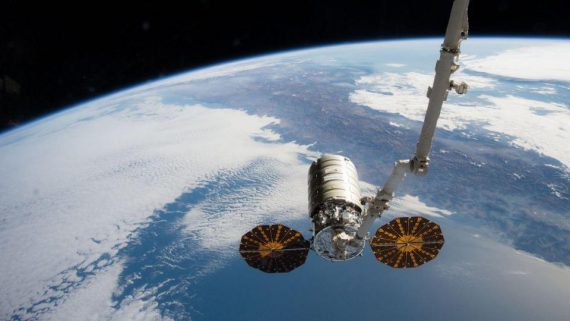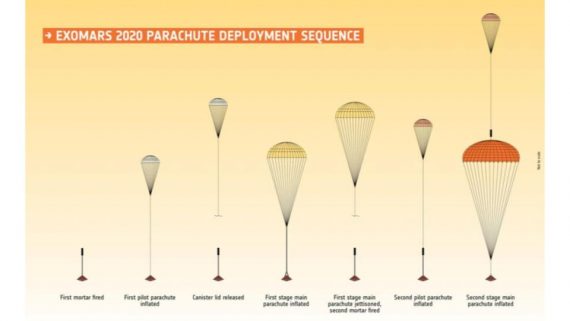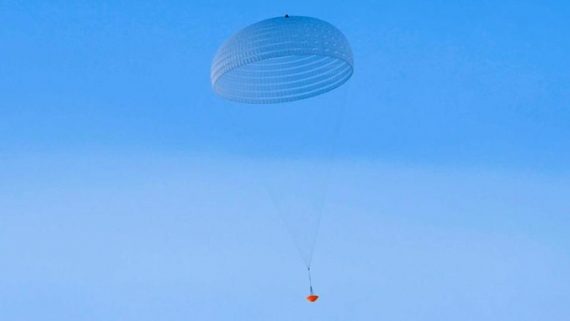 The #DailySpace brings you the universe at 10am PST / 1pm EST / 5pm GMT on twitch.tv/CosmoQuestX. Today’s #spacenews includes the following stories:
The #DailySpace brings you the universe at 10am PST / 1pm EST / 5pm GMT on twitch.tv/CosmoQuestX. Today’s #spacenews includes the following stories:
August 16: Electron, “Look Ma, No Hands” – 8:57am E / 1257 GMT
This little rocket will be packed full with 4 small satellites, which include 2 the BlackSky Global 4 Earth Obs satellite, and, also looking earthward, an UnseenLabs cubesat. It additionally carries Cube Sats for the US Air Force Space Command’s Pearl White Program, which is a tech test to push the capabilities of a cubesat in LEO. This will be the 8th flight launched from the Mahia Peninsula in New Zealand.
August ??: Rockot, Geo-IK 2
Following on the Earth Observing theme, the Geo-IK 2 is part of a Russian constellation of military Earth Mapping satellites that are being used to create highly precise 3D maps of our world and its motions. Yes – these missions are precise enough to monitor plate tectonic shifts! How is that for hi-res observing!
August 19: Long March 3B, Chinasat 18
Not all satellites can be exciting, and this brings us to Chinasat 3. This satellite is just a regular everyday comms satellite that will support internet communications over the Asia-Pacific region.
August 21/22: Soyuz, ISS 60S – 11:38pm E / 0338 GMT

- https://www.nasaspaceflight.com/2019/04/ng-11-cygnus-brings-science-iss/
- https://spaceflightnow.com/2019/08/06/ng-11-cygnus-iss-departure/
- https://spaceflightnow.com/2019/04/16/northrop-grumman-introducing-new-capabilities-on-cygnus-cargo-craft/
Launched April 19, the NG-11 Cygnus spacecraft carried 7600 pounds or 3442 kg of supplies to the ISS. Its cargo included food, provisions and 40 mice. I do not know the status of the mice. While most supply ships go to the ISS, and then return to Earth or burn up in the atmosphere, Cygnus has a slightly different fate. After 109 days attached to the ISS, this little craft has been set free, and it is now starting its own 4 month mission. During this free-flying period, it will deploy a series of smallsats and perform a variety of tech demonstrations to prove what it is capable of. It will also be packed full of garbage from the ISS.
NG-11 Cygnus also goes by the name S.S. Roger Chaffee, and is named after the late astronaut who perished in the Apollo 1 fire in 1967 alongside Gus Grissom and Ed White. This is a fitting name for a spacecraft that is testing what it’s capable of. It’s hoped that if the mission is successful, this will be the first of many times the Cygnus capsules will be used for long duration experiments after their supply run to the ISS.

- https://spacenews.com/esa-confirms-second-exomars-parachute-test-failure/
- https://www.space.com/exomars-rover-parachute-test-problems.html
- https://spaceflightnow.com/2019/08/13/exomars-parachute-failures-could-jeopardize-2020-launch-date/
In our final story of the day, we have something that is sadly not uplifting, either figuratively or literally.
During a test of Monday, there was a failure during a parachute test involving a parachute type that was planned for use on the European Space Agency’s ExoMars lander. There had been an earlier failure in May when both this 35m parachute and it’s partner 15 meter parachute were damaged.

Modifications had been made since that failure, and it was hoped all would go well during this test… but space is hard folks, and designing parachutes for the crazy thin atmosphere of mars is crazy difficult.
With one year to go before Exomars is scheduled to launch, this failure raises questions about if ExoMars will be ready. Both ESA, and its mission partner Roscosmos are dedicated to being ready on time, and ESA will be bringing holding a workshop of Mars parachute specialists in September, with tests of the parachutes planned for December and early 2020.
The ExoMars rover (now known as the Rosalind Franklin rover) is about 60% larger than the Spirit & Opportunity rovers, too big for the airbag-style landing they used, but (hopefully) able to forgo the “SkyCrane” madness needed by Curiosity… IF they can get its chutes to work in the incredibly thin atmosphere of the Red Planet.
Rosalind Elsie Franklin (25 July 1920 – 16 April 1958)[1] was an English chemist and X-ray crystallographer whose work was central to the understanding of the molecular structures of DNA (deoxyribonucleic acid), RNA (ribonucleic acid), viruses, coal, and graphite.[2]Although her works on coal and viruses were appreciated in her lifetime, her contributions to the discovery of the structure of DNA were largely recognized posthumously.
Spacecraft headed for the ISS, including Soyuz MS-14 / ISS 60S:
Mission: Launch: Country: Significant dates:
MS-14 (uncrewed) 22 AUG (GMT) RUS ARR: 22 AUG / DEP: 06 SEP
MS-15 (crewed) 25 SEP RUS
ARR: 25 – 27 SEP (depending)
CRS-18 (uncrewed) 24 JUL (past) USA
DEP: 27 AUG for Pacific Ocean retrieval
HTV-8 (uncrewed) 10 SEP* JAP ARR: 14 SEP
*note for the HTV-8 = launch comes 10 yrs to the day from the first HTV launched to the ISS by JAXA.
Join us tomorrow for more Daily Space news – and keep mapping Bennu!




 Join the Crew!
Join the Crew!
 Escape Velocity Space News
Escape Velocity Space News
0 Comments